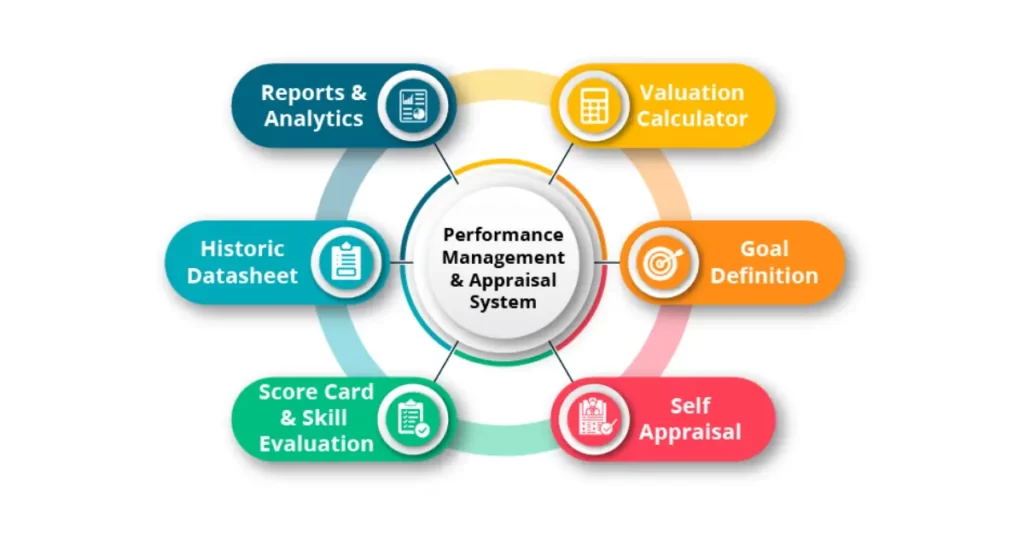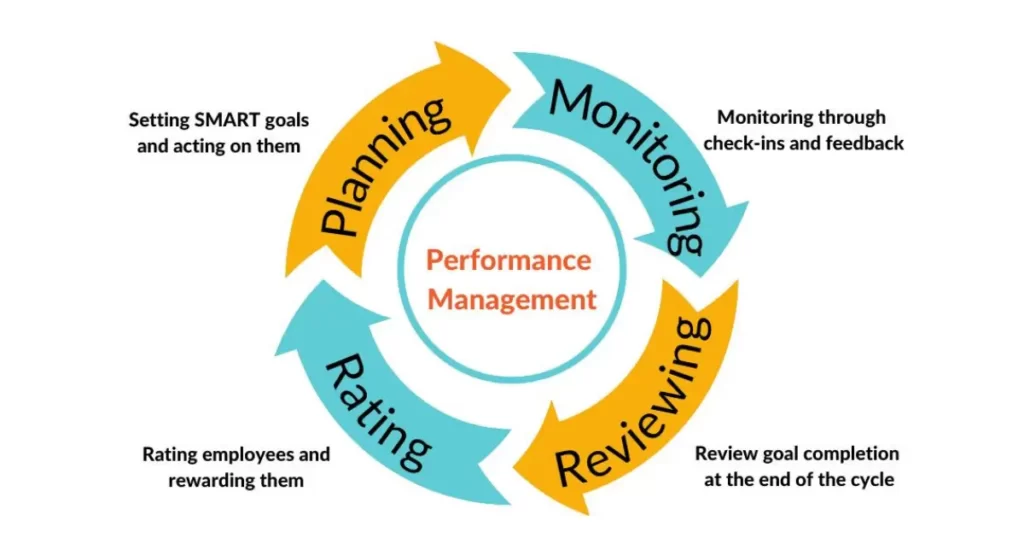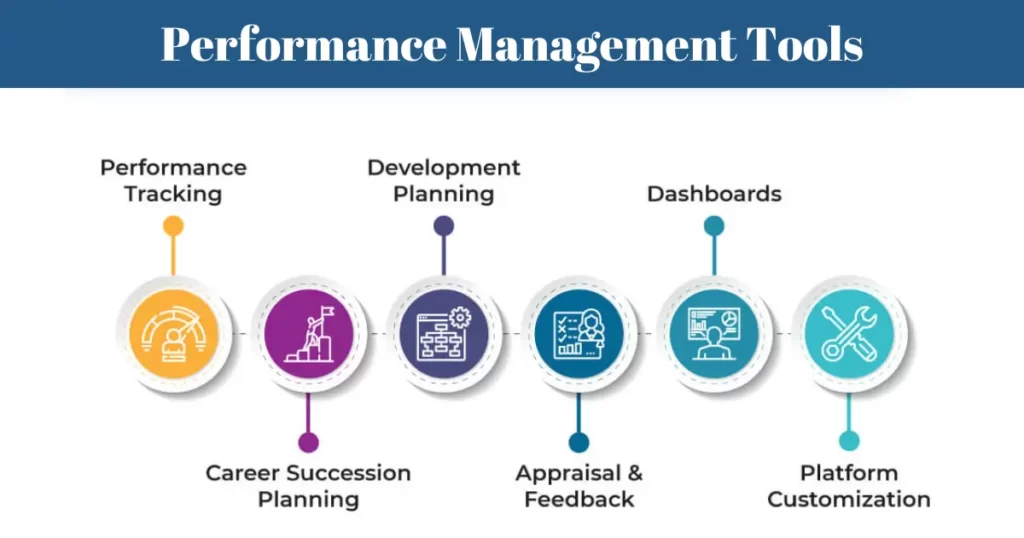Introduction to Performance Management
In today’s modern workplace, the importance of performance management cannot be stressed enough. It serves as a significant tool for organizations to effectively manage and improve employee performance, aligning individual goals with the overall objectives of the company. It has evolved over time, adapting to changing business landscapes and employee expectations.
Performance Management Definition
Performance management can be defined as a strategic approach aimed at continuously improving individual and organizational performance. It involves setting clear expectations, providing regular feedback, conducting objective evaluations, and supporting employee development. The key principles of performance management encompass fairness, transparency, accountability, and collaboration.
Table of Contents
Components of a Performance Management System
A well-rounded performance appraisal system comprises various components that work cohesively to create an environment of growth and productivity.

Goal Setting and Alignment
Setting SMART (Specific, Measurable, Achievable, Relevant, Time-bound) goals is fundamental to performance management. This approach ensures that goals are clear and actionable. Additionally, it is crucial to cascade these goals throughout the organization, from top-level executives to frontline employees, to create alignment and integration.
Continuous Feedback and Communication
Regular feedback plays a pivotal role as it enables individuals to understand their strengths, areas for improvement, and progress towards their goals. Effective communication strategies, such as active listening and constructive dialogue, foster a culture of transparency and collaboration within the organization.
Performance Evaluation and Appraisal
The traditional methods of performance appraisal have given way to more modern approaches that focus on ongoing feedback and dialogue. These methods include 360-degree feedback, self-assessment, and peer reviews, promoting fairness and objectivity in assessing performance.
Employee Development and Growth
Recognizing and nurturing employees’ potential for development and growth is a critical aspect of performance appraisal. Identifying developmental opportunities, such as training programs or mentoring, and implementing personalized development plans help individuals enhance their skills and career prospects.
The Performance Management Process
A systematic performance management process ensures that performance is effectively managed, monitored, evaluated, and improved.

Planning Phase
During this phase, performance expectations are defined, and performance metrics and standards are established. Clarity regarding what is expected from employees sets a strong foundation for performance appraisal.
Monitoring Phase
Regular performance tracking is essential to identify deviations and areas of improvement. This phase involves ongoing monitoring and analysis of individual performance, ensuring that progress aligns with predefined goals.
Evaluation Phase
Conducting formal performance reviews allows for a comprehensive assessment of an employee’s attainment of goals and objectives. These evaluations provide an opportunity to provide feedback, recognize achievements, and identify areas requiring improvement.
Feedback and Improvement Phase
Delivering constructive feedback is crucial for continuous improvement. Organizations can implement performance improvement plans to address concerns and help employees overcome challenges, ultimately enhancing individual and organizational performance.
Performance Management Tools
Employing suitable tools and technologies is essential to streamline and enhance performance appraisal processes.

Performance Management Software
Utilizing performance management software offers various features and benefits that simplify the process. These software solutions help automate goal setting, feedback collection, performance tracking, and reporting. Popular performance management software providers include Oracle, Workday, and SAP SuccessFactors.
Performance Dashboards and Analytics
Real-time performance tracking through interactive dashboards allows organizations to monitor progress, identify trends, and make data-driven decisions. Analytics tools provide valuable insights into performance gaps, enabling effective strategic interventions.
Overcoming Challenges in Performance Appraisal
While performance appraisal brings many benefits, it also presents challenges that organizations must address to ensure its success.
Common Pitfalls and Obstacles
Lack of clear performance metrics and insufficient training on performance appraisal are common pitfalls that hinder its effectiveness. Without clear metrics, it becomes challenging to measure and evaluate performance objectively. Insufficient training can lead to inconsistencies in implementing performance appraisal practices.
Strategies for Effective Implementation
Creating a positive performance culture that values openness, fairness, and learning is essential for effective performance appraisal. Providing ongoing support and training to managers and employees ensures everyone is equipped with the necessary skills to navigate the performance management process successfully.
Employee Engagement and Performance Management
Employee engagement and performance are closely intertwined, with engaged employees demonstrating higher levels of productivity and commitment.

Link Between Employee Engagement and Performance
When employees feel valued, engaged, and have a clear understanding of their role in achieving organizational objectives, their performance improves significantly. Engaged employees are more likely to go the extra mile, innovate, and contribute to the success of the organization.
Enhancing Engagement through Performance Appraisal Practices
Inclusion of employee input in goal setting fosters a sense of ownership and increases engagement. Recognizing and rewarding high performers not only motivates individuals but also signals the organization’s commitment to acknowledging and appreciating outstanding efforts.
Performance Appraisal Trends and Future Outlook
Performance appraisal practices continue to evolve to keep up with dynamic workplace dynamics and advancements in technology.
Shift towards Continuous Performance Appraisal
Organizations are shifting away from the traditional annual performance review system toward continuous performance appraisal. This approach promotes ongoing conversations, regular feedback, and agile goal-setting, enabling individuals to adapt and improve continuously.
Leveraging Artificial Intelligence in Performance Management
The integration of artificial intelligence (AI) in performance appraisal holds promising prospects. AI-powered tools can automate administrative tasks, provide real-time insights, and make performance predictions based on data analysis, enabling organizations to make more informed decisions.
Summary and Conclusion
Performance management is a vital strategic tool that empowers organizations to drive employee performance, enhance engagement, and achieve organizational success. By implementing a comprehensive performance management system comprising goal setting, feedback, evaluation, and development, organizations can create an environment that fosters growth and productivity.
Frequently Asked Questions (FAQs)
A. Why is performance management important for both employees and employers?
Performance appraisal provides clarity on expectations, recognizes achievements, identifies areas for improvement, and supports employees in their developmental journey. It helps employers drive organizational success by aligning individual performance with business objectives.
B. How often should performance evaluations take place?
The frequency of performance evaluations can vary depending on organizational needs. However, regular check-ins and ongoing feedback are essential to ensure performance remains on track and goals are continuously updated.
C. What are some strategies for providing effective feedback during the performance review process?
Some strategies for providing effective feedback during performance reviews include focusing on specific behaviors, framing feedback constructively, offering solutions, and maintaining open and honest communication.
D. How can organizations measure the effectiveness of their performance appraisal practices?
Organizations can measure the effectiveness of their performance management practices by analyzing key performance indicators (KPIs) such as employee satisfaction, retention rates, productivity levels, and achievement of strategic objectives.
E. What should employees do if they feel their performance is being unfairly evaluated?
If employees believe their performance is being unfairly evaluated, they should first seek clarification from their immediate supervisor or manager. If the issue persists, they can escalate the matter to the human resources department or follow the organization’s established grievance procedures.
F. Is performance appraisal relevant for remote teams or distributed workforces?
Yes, performance appraisal is equally important for remote teams or distributed workforces. The principles and processes of performance management can be adapted to accommodate the unique challenges and dynamics of remote work, ensuring alignment and accountability.
Note: This comprehensive guide aims to provide insights into the definition, systems, processes, and tools associated with performance management. The content is based on research in the field of organizational psychology and human resource management, allowing readers to gain a holistic understanding of performance management and its significance in today’s workplace.
Read More: